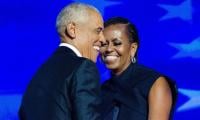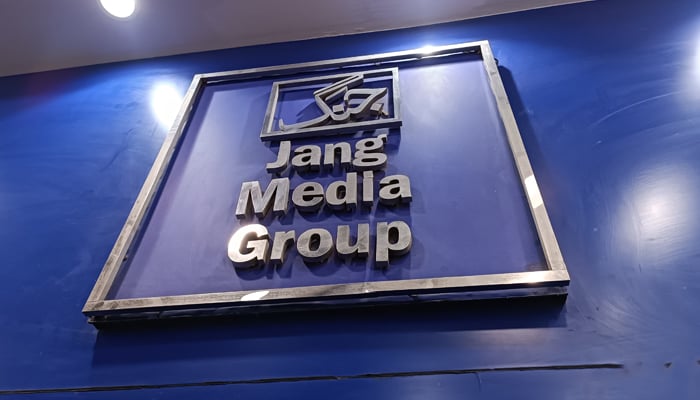Jang’s enduring legacy as the pinnacle of public discourse
The news and opinions presented in any newspaper are crafted for its specific target audience
American playwright, essayist and screenwriter, Arthur Miller, once said, “A good newspaper, I suppose, is a nation talking to itself.”
The news and opinions presented in any newspaper are crafted for its specific target audience. Reflecting on the quality of content found in newspapers such as Jang, one can discern the true vision of Mir Khalil-ur-Rahman regarding his newspaper. When a newspaper evolves into the voice of a nation, and its articles analyse issues while providing solutions aligned with the people’s desires, readers embrace it as their own voice.
Mir Saheb granted considerable freedom to his writers, allowing them to express their thoughts on various issues without constraints. This approach occasionally incurred the displeasure of certain individuals or organisations, but he steadfastly endured such pressures, demonstrating complete patience. In doing so, he not only protected his writers but also upheld their analyses when he believed they accurately reflected the broader public opinion.
Undoubtedly, this approach proves instrumental in the survival of newspapers. It was this very strategy that enabled Jang to endure even the most formidable challenges, including censorship, legal restrictions, martial laws, economic sanctions, newsprint and advertisement bans. The paper’s unwavering appeal among its audience played a pivotal role in navigating through these adversities.
Crafting a popular opinion and appealing to a diverse audience constitute another strategic approach through which a newspaper assumes the role of a nation’s voice. Jang’s writers delve into the perspectives of their readers, subsequently producing content that resonates with and satisfies the diverse thoughts of their audience.
A well-crafted news item necessitates impeccable factual details, a comprehensive background, and an up-to-date status. While Jang’s news coverage adheres to the fundamental principles of objective reporting, its opinion pieces, analytical reports, and features constitute a fusion of facts, statistics, supported by compelling arguments, and the opinions of relevant stakeholders. This approach extends across different sections of Jang, encompassing its weekly magazines tailored to meet the needs of women, youth, children, sports enthusiasts, as well as fashion and showbiz enthusiasts. The features, articles, and opinions printed on various issues in these sections not only possess newsworthiness but also serve to educate and shape the opinions of the readers.
Another distinguishing feature of the Jang Group is its emphasis on investing in its research section. The paper not only diligently preserves its archives in the form of microfilms but also maintains a dedicated and experienced team in its research section to document every significant event. This commitment ensures that whenever an opinion piece is published, its context is readily available, lending authenticity to the piece and reminding readers of pertinent past information related to a specific issue.
A notable manifestation of this research-oriented approach is evident during elections in Pakistan, where Jang establishes a dedicated election cell. As election results for candidates or political parties unfold, analysts provide the audience with relevant historical information about the candidate or party, elevating the informational standards for readers. This practice has led to the perception of Jang as one of the “movers and shakers” in government affairs, although this branding lacks truth. Jang, in reality, presents facts and statistics, and it is the public’s interpretation based on this information that shapes the popularity trajectory of individuals or parties.
Likewise, various sections within Jang adhere to a similar strategy, presenting diverse opinions on a given issue. For instance, the women’s pages feature interviews with celebrities who are given the freedom to express their views on various issues. Similarly, on the youth pages, alongside showcasing the achievements of young individuals in different fields, opinion pieces reflect the youth’s perspectives on various socio-economic issues, allowing them to express their thoughts with complete liberty.
The letters section in this section, which was once highly popular, featured “Bhai Jan” responding to every query sent by the youth. This interactive engagement with the audience supported the notion of “...a nation talking to itself,” involving the readership in a dialogue that extended beyond the traditional boundaries of news dissemination.
Similarly, the “Murasilaat” or letters to the editor is considered the most popular section in every newspaper, and Jang is no exception. Accompanied by the disclaimer, “The letters don’t reflect the approval or disapproval of the Editor or the organization,” newspapers safeguard themselves from objections. Simultaneously, this disclaimer grants them the freedom to publish public opinion. This section provides readers with a platform to express their views on societal ills, the government, or organizations. It serves as a reflection of the attitudes, thoughts, and opinions of the people. Essentially, this section serves as the direct communication channel between the readers and the newspaper, often drawing attention to matters that warrant government consideration.
To sum up, Jang stands as a newspaper for the people, attuned to the pulse of its readers and formulating its strategy accordingly. Other publications of the group that emerged after Jang adopted similar methods and strategies. Jang’s magazines, such as The Mag Weekly and Akhbar-i-Jahan, along with its English newspaper The News International, its popular eveningers, which are not being published these days, “Awam” and “Daily News”, consistently faced strong objections, especially in response to investigative reports. However, the writers and editors always presented well-supported proof and arguments to counter any rebuttals. Many of the initially contested news reports were later proven accurate, with even international media citing Jang or its television network, Geo TV, for their coverage.
Whether through newspapers, magazines, or TV channels, the audience always looked to these platforms for reliable news. The appeal of Jang’s publications never waned, and the nation found its voice reflected in these mediums. Despite numerous challenges, the founder and editors remained unwavering in maintaining the ethos established from the newspaper’s inception, a commitment that is expected to persist in the future. While Mir Khalil-ur-Rahman is not alive today, his vision endures through the publications printed under the Jang umbrella. Mir Saheb undoubtedly built an empire not only by words butt by his actions. It is said,
“To build a successful empire, you must first build a solid foundation,” and Mir Saheb gave that solid foundation in the form of Jang and this empire is truly “built on the shoulders of those who are not afraid to take risks.”
-
 European Leaders Slam Trump’s Tariff Threat Over Greenland As ‘unacceptable’
European Leaders Slam Trump’s Tariff Threat Over Greenland As ‘unacceptable’ -
 Princess Eugenie Leaves Father Andrew 'devastated' With Big Step: 't's Brooklyn Beckham Level'
Princess Eugenie Leaves Father Andrew 'devastated' With Big Step: 't's Brooklyn Beckham Level' -
 Nova Scotia Snow Storm Warning Issued As Heavy Snow Moves In
Nova Scotia Snow Storm Warning Issued As Heavy Snow Moves In -
 Vancouver Canucks 2025-26 Season: Adam Foote’s Future Under Early Scrutiny
Vancouver Canucks 2025-26 Season: Adam Foote’s Future Under Early Scrutiny -
 Gabriel Diallo Vs Alexander Zverev: Rising Canadian Eyes Major Upset Opportunity
Gabriel Diallo Vs Alexander Zverev: Rising Canadian Eyes Major Upset Opportunity -
 Bo Nix Injury Update: Broncos Quarterback Fractures Ankle Against Bills
Bo Nix Injury Update: Broncos Quarterback Fractures Ankle Against Bills -
 Oilers Vs Canucks: Why Edmonton Is Without Leon Draisaitl
Oilers Vs Canucks: Why Edmonton Is Without Leon Draisaitl -
 49ers Crushed As Kenneth Walker III Leads Seahawks To 41-6 Win
49ers Crushed As Kenneth Walker III Leads Seahawks To 41-6 Win -
 Canadiens Star Lane Hutson Makes History With 100th NHL Assist
Canadiens Star Lane Hutson Makes History With 100th NHL Assist -
 Bridgerton’s Claudia Jessie Says Her Real-life Style Is Nothing Like Eloise’s
Bridgerton’s Claudia Jessie Says Her Real-life Style Is Nothing Like Eloise’s -
 Prince William Barred From Riding E-scooter At His Own Home!
Prince William Barred From Riding E-scooter At His Own Home! -
 Prince William New PR Step Is Not 'shrewed Move,' Says Expert
Prince William New PR Step Is Not 'shrewed Move,' Says Expert -
 Barack Obama Honours Michelle Obama On Her 62nd Birthday
Barack Obama Honours Michelle Obama On Her 62nd Birthday -
 Why Kate Middleton Runs Away From 'some Royal Relatives'
Why Kate Middleton Runs Away From 'some Royal Relatives' -
 Khloe Kardashian's Ex-husband Lamar Odom Arrested In Las Vegas
Khloe Kardashian's Ex-husband Lamar Odom Arrested In Las Vegas -
 Andrew Mountbatten Windsor Has Staff From 'big Brother' For All His Needs
Andrew Mountbatten Windsor Has Staff From 'big Brother' For All His Needs




